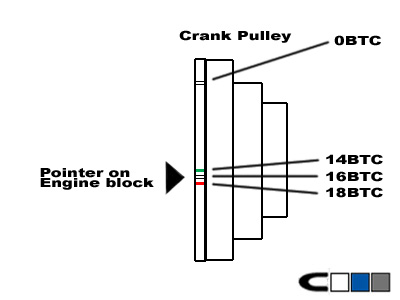


#Timing gun professional
It’s not that there’s anything wrong with the instrument itself - they can give you all the readings you need - but rather that there’s no way for you to adjust the timing without the kind of computer setup that’s usually only found in dealerships and professional auto shops. This is important because a number of high-end timing lights say they work with electronic, computer-controlled, and distributorless ignition systems (DIS), but that’s a little misleading. Without these marks, a timing light simply can’t be used. Sometimes they’re on the fan pulley, sometimes the flywheel, and occasionally on the timing belt/chain cover.

If you can do the job, there will be a set of visible timing marks somewhere on the motor, most often on the end of the crankshaft pulley. It should probably bear the words “Hands off!” Unless you’ve got a computer, you aren’t going to adjust the timing on that baby. Lifting the hood just presents you with a big lump of featureless plastic. Many motors built since the 1990s have no distributor or spark plug cables. Most motors built since the 1980s have electronic or breakerless ignition. The first thing you need to do is establish whether the job can be done. With older vehicles, it could just be because your engine shakes a fair bit! Whatever the cause, things aren’t running as they should. Classic and collectors’ vehicles often have points in the distributor that need changing sooner or later. The timing chain stretches out eventually. General wear and tear can cause your timing to run out. As one expert put it, on a V8 engine, it looks a bit like a rubber octopus! Older vehicles use a distributor that has spark plug cables sprouting out in all directions. In a gasoline engine, ignition timing sends an electric current to each spark plug at precise time intervals and in a predetermined sequence (diesel engines don’t have spark plugs). If you have the right setup, these tools can also be used for bench testing. Your engine doesn’t have to be in the vehicle to check its timing. We’ve also included a number of recommendations that showcase the variety of high-quality, great-value tools available. To help clarify the important timing light features, we’ve put together this comprehensive buying guide. The not so good news is that if you’re looking to buy your first timing light, the capabilities and jargon can be a bit confusing. All those things add up to excess stress on the engine - and your wallet! The good news is that there are plenty of timing lights to choose from, and something for any budget. If your spark plug timing is off, all kinds of things can go wrong, from difficulty starting, poor acceleration, and an overall drop in performance to backfiring, strange “pinging” noises, and higher gas consumption. Checking and setting the timing correctly isn’t a complicated job for the home mechanic as long as you have an accurate timing light. That firing is controlled by the ignition timing. The arrow on the induction clip points to the direction of the spark plug for normal use.In order for your engine to run properly, the spark plugs have to fire at exactly the right moment. The voltage line induction clip is clamped on the high voltage line of a cylinder.

The power supply 12V red positive, black negative, and power clips should not be reversed. Adjusting timing to specifications:ġ.Loosen distributor hold down locking bolt located at Base of distributor enough so that distributor may be rotated back and forth.Do not overloosen or remove Bolt but leave tight enough to prevent distributor from turning by itself.ģ.Direct timing light flash at timing marks and slowly rotate distributor right and left until timing marks are aligned with pointer.Stop engine.Ĥ.Tighten distributor holddown bolt using care not tochange position of distributor. While cars equipped with the new"breakerless Electronic Ignition Systems" will not normally change timing since there are no breaker points,the timing light can still be used to note changes in timing caused by troubles in the ignition system as well as for resetting timing when components are changed. The instant of spark plug firing is determined by the opening of the distributor ignition breaker points and will change any time the point gap or Dwell angle is changed.In addition,normal wear on the breaker point rubbing block will change the dwell and effect the timing.


 0 kommentar(er)
0 kommentar(er)
